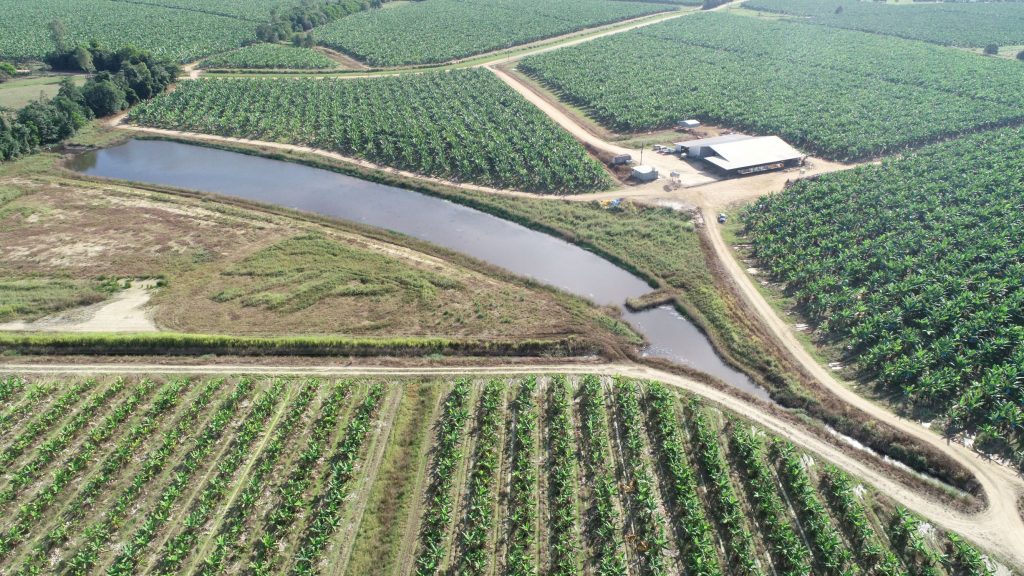Water-logged land on a Tully banana farm has been transformed into a water quality treatment wetland which is starting to show promising results.

By Skye Orsmond, Terrain
The constructed wetland is part of the Wet Tropics Major Integrated Project, which is trialling a range of treatment systems and methods to monitor and improve water quality in the Tully and Johnstone cane and banana growing areas.
Wetlands are known to improve water quality by removing nitrogen, mainly through the process of denitrification which involves bacteria in the soil converting nitrate in the water to nitrogen gas.
Tully banana grower Patrick Leahy saw potential for a constructed wetland on his 121-hectare farm.
“It was an unusable piece of land in a low-lying area of the farm. I knew a wetland would work well in that location but needed the support to make it happen,” Mr Leahy said.
With financial backing from the Wet Tropics Major Integrated Project, the constructed wetland has been made a reality for Mr Leahy, who has taken a proactive approach to improving water quality for over 15 years.
“I’ve got several sediment traps and grassed drains already across my properties. I’m happy to see that results to-date show that the wetland is doing its job,” Mr Leahy said.
The project partnered with Griffith University researcher Dr Fernanda Adame and her team from the Australian Rivers Institute to investigate and set a baseline for the performance of these treatment systems.
“The early indications look positive. The systems are starting to get the right conditions for the bacteria to remove nitrate from the water, and we are starting to see good levels of denitrification in the soil,” Dr Adame said.
“We assessed soil and water characteristics and potential denitrification rates at the end of last year’s dry season.
“Wetland species, bulkuru and grey rush, were planted at the site and a native, triangular sedge, is naturally vegetating the area.
“As vegetation establishes, the new leaves and roots of the plants will provide ‘food’ to these bacteria, which will result in improved efficiency of this wetland with time – removing nutrients from the water before it leaves the property,” Dr Adame said.
Like natural wetlands, constructed wetlands can also trap sediments, pesticides, metals and pathogens in water.
Wet Tropics Major Integrated Project Catchment Repair Coordinator, Suzette Argent, is responsible for managing and monitoring catchment repair systems and works closely with landholders where trials are taking place.
“Building relationships with growers is imperative. Getting landholders on board and eager to trial new things is the cornerstone of the project,” she said.
“We enjoy taking growers on the journey and sharing the results with them. They can see the difference they’re making,” Ms Argent said.
Other treatment systems including bioreactors, high efficiency sediment basins and in-drain wetlands have also been installed and are being monitored on farms throughout the Tully and Johnstone areas as part of the project.
The Wet Tropics Major Integrated Project is funded through the Queensland Government’s Reef Water Quality Program.
SMALLER-SCALE WATER QUALITY SOLUTIONS AVAILABLE
Funding is available for growers interested in implementing small scale water quality run-off solutions including in-drain wetlands. An in- drain wetland is essentially a vegetated drain with benched sides.
These types of water treatment systems are more cost effective than large-scale constructed wetlands and are easy to maintain. Vegetation is a crucial component of water treatment systems, as it aids the denitrification process, helps prevent erosion and traps sediment. WTMIP is currently trialling an in-drain wetland on Gavin Devaney’s banana property in Moresby, near Innisfail.


